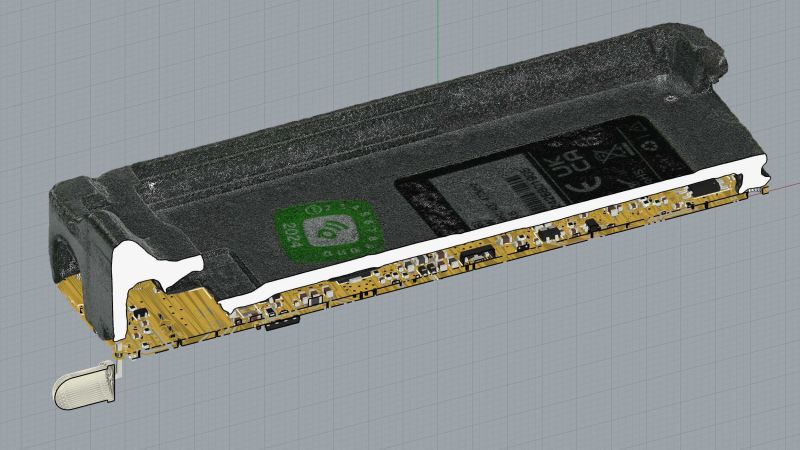Reverse-engineered schematics are de rigeur around these parts, largely because they’re often the key to very cool hardware hacks. We don’t get to see many mechanical reverse-engineering efforts, though, which is a pity because electronic hacks often literally don’t stand on their own. That’s why these reverse-engineered mechanical diagrams of the Quansheng UV-K5 portable amateur radio transceiver really caught our eye.
Part of the reason for the dearth of mechanical diagrams for devices, even one as electrically and computationally hackable as the UV-K5, is that mechanical diagrams are a lot less abstract than a schematic or even firmware. Luckily, this fact didn’t daunt [mdlougheed] from putting a stripped-down UV-K5 under a camera for a series of images to gather the raw data needed by photogrammetry package RealityCapture. The point cloud was thoughtfully scaled to match the dimensions of the radio’s reverse-engineered PC board, so the two models can work together.
The results are pretty impressive, especially for a first effort, and should make electromechanical modifications to the radio all the easier to accomplish. Hats off to [mdlougheed] for the good work, and let the mechanical hacks begin.
















i thought the reason we didn’t see many reverse-engineered mechanical diagrams for things like this is that it’s just not mechanically very interesting. for most hobbyist projects you simply need to measure a few key dimensions for your replacement case or add on or so you know how much space it will take in your larger project box. anyone who wants this information will reach for their ruler and calipers instead of looking for a diagram? am i missing something?
i mean, using a protractor on the genuine article is difficult / error-prone sometimes but for your basic rectangular box with ridges and slots, i don’t understand the need
Maybe extending the case to make room for band pass filters?
Like, for other bands than what it currently includes? Because if so you’d have to get around the existing filters, not just add length and put some more on the end.
Probably very useful as a basis for a 3D printed enclosure which accommodates additional HW options.